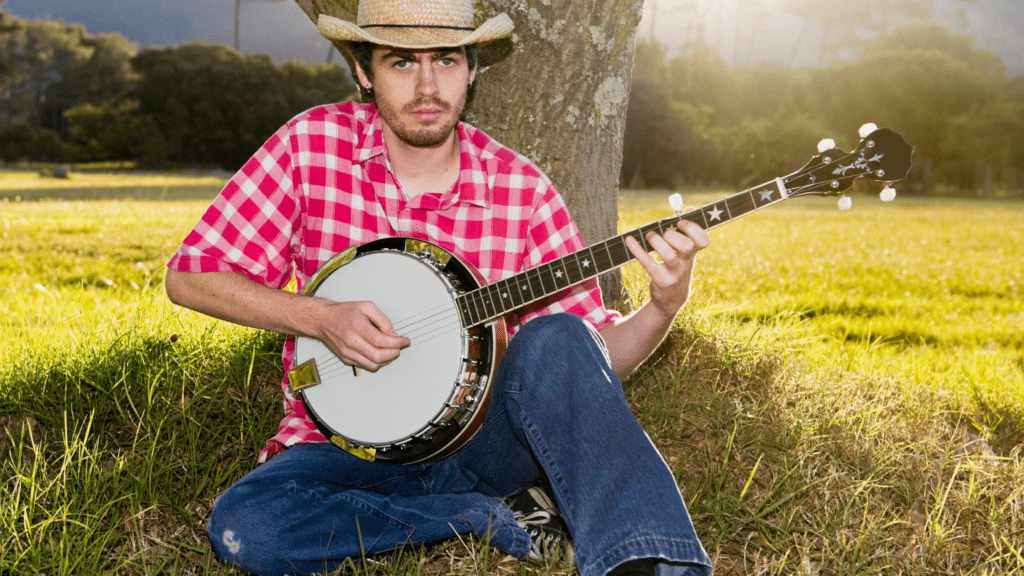There are plenty of great options out there for beginner banjos. However, owning a banjo is different from knowing how to play one. Banjos are synonymous with bluegrass, jazz, and country music, and have become a popular first instrument to learn.
While they may seem similar to guitars, banjos are fundamentally different in how they look and are played. Banjos typically are smaller, have a rounder shape, and have a slimmer neck.
The best part about learning to play the banjo is that you can teach yourself how to play it. There are lots of resources online that can help you learn, like this one!
Below we have included some basic steps to help you start learning to play this beloved instrument.
Types Of Banjos
When it comes to the build of a banjo they come in 2 main styles, open back, and resonator. Each offers different advantages and disadvantages but the main difference is that a resonator has a ‘bowl’ on the back of the sound chamber. Open back is ideal for beginners as they are quieter and lighter, perfect for practicing the basics. Resonators are generally heavier and offer a fuller sound, but they tend to be more expensive.
The number of strings on a banjo can also vary. You can find 4, 5, and 6-string banjos. For beginners, it is recommended to start with a 5 string banjo since they are popular and offer a traditional sound. 4 strings are also a common choice because the smaller number of strings is easier to learn and remember.
Step 1: Tuning
The first thing you need to do is tune your banjo. Every stringed musical instrument needs tuning to produce the correct note because the strings can loosen over time. At the end of the neck of a banjo, you will find the tuning knobs, these are used to tighten or loosen the strings.
The easiest way to tune your banjo is to use a tuning device, these are small mechanical tuners that usually clip onto your banjo. They will help you tune each string to the desired note with ease. If you have a piano handy then you can also play the note on the piano and match the pitch to your banjo. Some people are blessed with perfect pitch and can tune their instruments from memory.
A 5-string banjo will typically be tuned to a standard ‘G’ tuning, this is to the notes GDGBD from 5th to 1st string.
Step 2: Positioning
Getting comfortable while holding your banjo is a crucial step that many overlook. You need to be in a relaxed position and not bent over. Banjos are relatively heavy so they need to be rested on your lap or leg.
If you aren’t comfortable then you should try moving the positioning of your elbows. You should hold your banjo so that your right-hand plays the strings whereas your left has the frets. It is important to keep your wrists in a neutral position to avoid strain and help with mobility.
If you are left-handed then you will need a specially designed banjo for left-handed people. These are needed because the bridge and nut have to be turned 180 degrees.
Step 3: Basic Rolls
Rolls are a term used in banjo playing to describe the picking patterns. Basic rolls are typically 8 repeating notes to help you practice picking and timing. It is suggested that you use a metronome or other time-keeping devices to make sure you are keeping the right pace. You should only move on to advanced rolls once you have mastered the basics.
One of the main differences between banjos and guitars is that guitars are primarily strummed, whereas banjos are picked. While guitars usually use only one pick, banjo players can use up to five picks. These are metal picks that go on the end of each finger, while they aren’t necessary for banjo playing they do provide a stronger sound.
There are many different styles of playing the banjo which includes finger picking and different strumming to create a unique sound.
Conclusion
In the end, practice makes perfect. Just a little bit of playing every day can go a long way in improving your memory and general finger dexterity. After a while, you can also start experimenting to find your sound on a banjo.
If you are still struggling to nail the basics, you can always ask around your local music shops about lessons or further resources.











